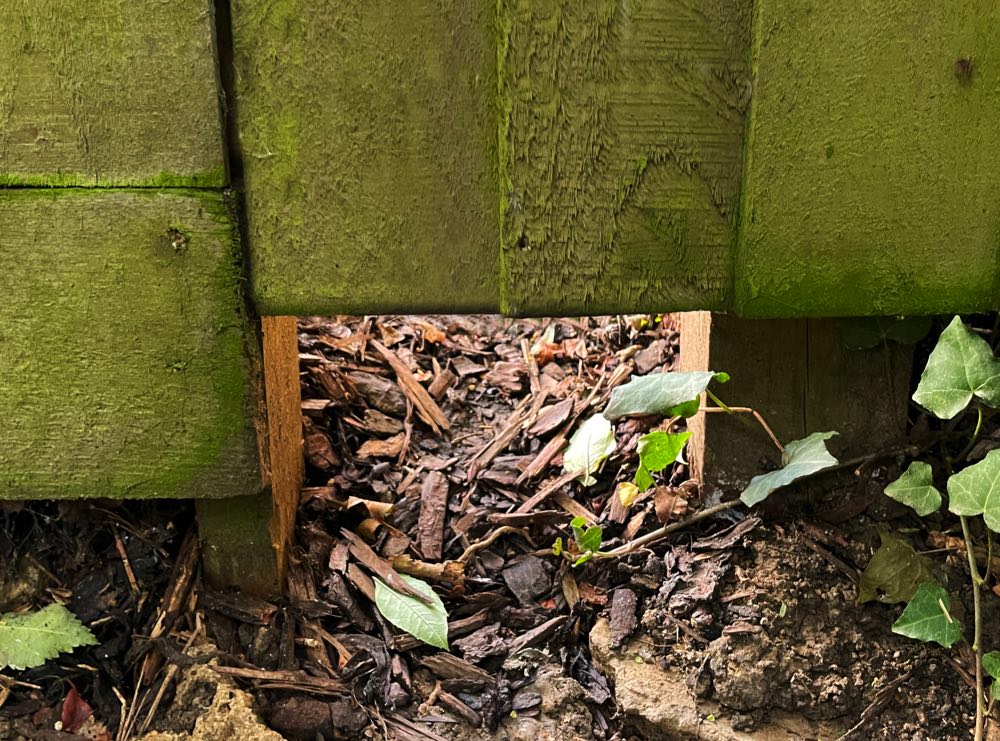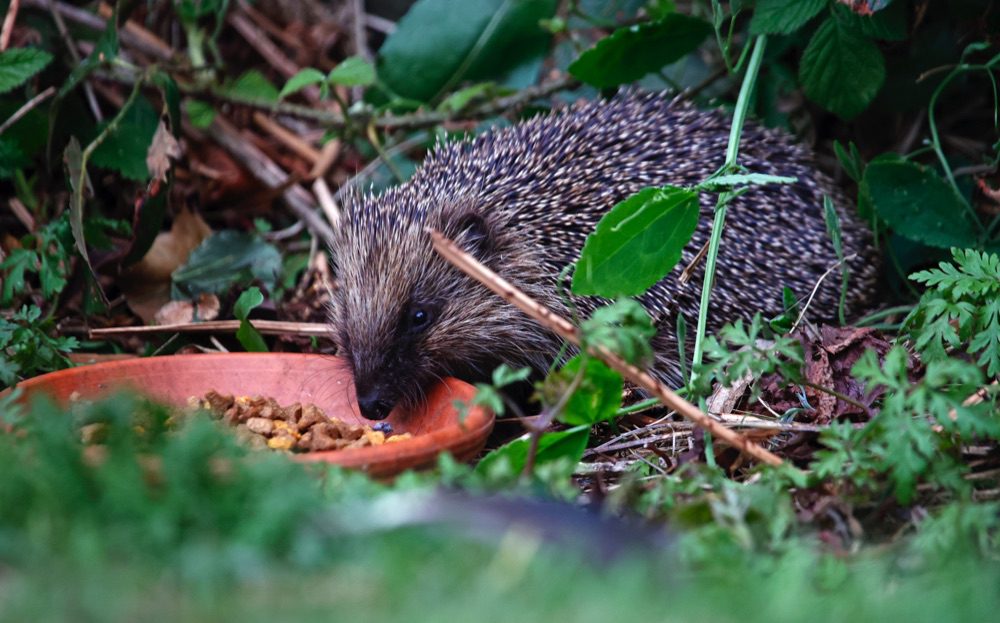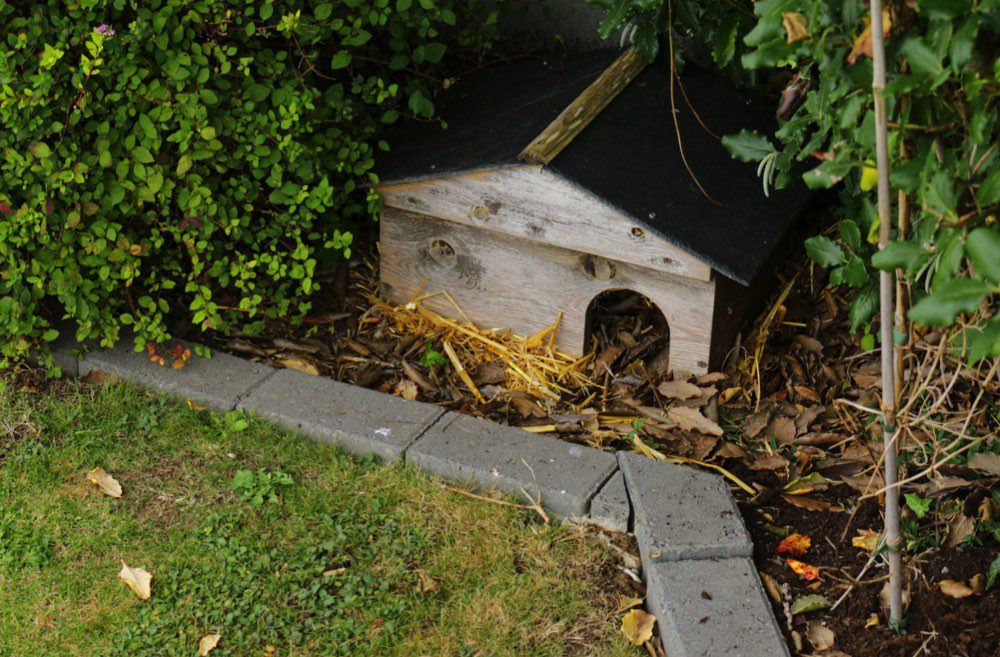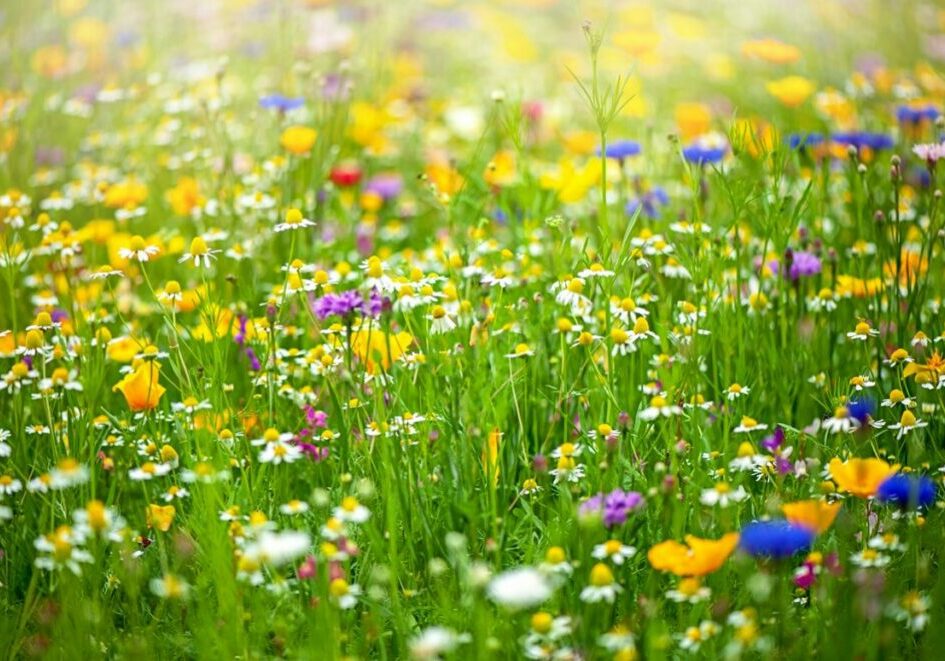The UK is one of the most nature-depleted countries in the world, with our wildlife under threat from habitat loss, pollution and other effects of human activity, including climate change. One of the victims of this decline has been the humble hedgehog – numbers have fallen by more than 65% since 1995.
But even in urban areas it’s possible to make life a bit easier for hedgehogs – follow our tips to help hedgehogs to nest, eat and move around.
During warmer weather, you might spot one of these wonderful little wanderers at dusk. If you see one during the day it’s possible it’s a mother looking for extra food for her young, but it could also be starving, dehydrated or ill – leave out water and suitable food (see below) immediately, and contact your nearest hedgehog sanctuary with any concerns.
Our three tips are aimed at people with gardens, but you can ask your local council to increase the number of wild spaces in parks and public areas, to give hedgehogs the best possible chance of survival.

1. Create a hedgehog highway
Hedgehogs rely on gardens for vital habitat, but they’ll have more chance of thriving when they can move between many gardens. With your neighbours’ permission, cut a hole about 15x15cm (around the size of a CD case) at the bottom of your fence to enable hedgehogs to pass through. If it’s not possible to cut the fence, you could dig a similar-sized channel underneath it instead. Do this on both sides of your garden to let hedgehogs roam freely in search of food and nesting spots.
2. Provide some food
Hedgehogs are a gardener’s friend, feeding on many animals considered pests. But you can leave out extra food to help sustain them. In hot weather, a saucer of water in a shady spot will be a great help. Hedgehogs will also drink from ponds, but ensure yours has shallow, sloping sides so they can climb out. Bread and milk are bad for hedgehogs – dry cat food is best. To stop cats, dogs or other larger animals eating the food, upcycle a large plastic storage box into a feeding station – just turn it upside down, cut a hedgehog-sized entrance, and place food and water underneath it. Put it in a secluded area, weighted down with a few bricks, and check it daily.


3. Set up a hedgehog home
You can help even more by leaving a wild corner in your garden, allowing the grass and other plants to grow, which provides really good shelter for hedgehogs, as well as materials for them to build a nest. This is important all year round. If you’d like to provide a more permanent home for hedgehogs, you could follow the Wildlife Trusts’ guide to building a hedgehog house. It’s an ideal project if you’ve got any offcuts of wood lying around, or old fence panels are ideal.
ALL IMAGES © GETTY
More ways to help nature at home
There are lots more ways to take action for UK nature at home or in your community on the Save Our Wild Isles website.
More to explore

Grow your own wildflowers – wherever you live
Whether you have a garden or a window box, sowing wildflower seeds can provide a vital boost for nature. Get planting today!

